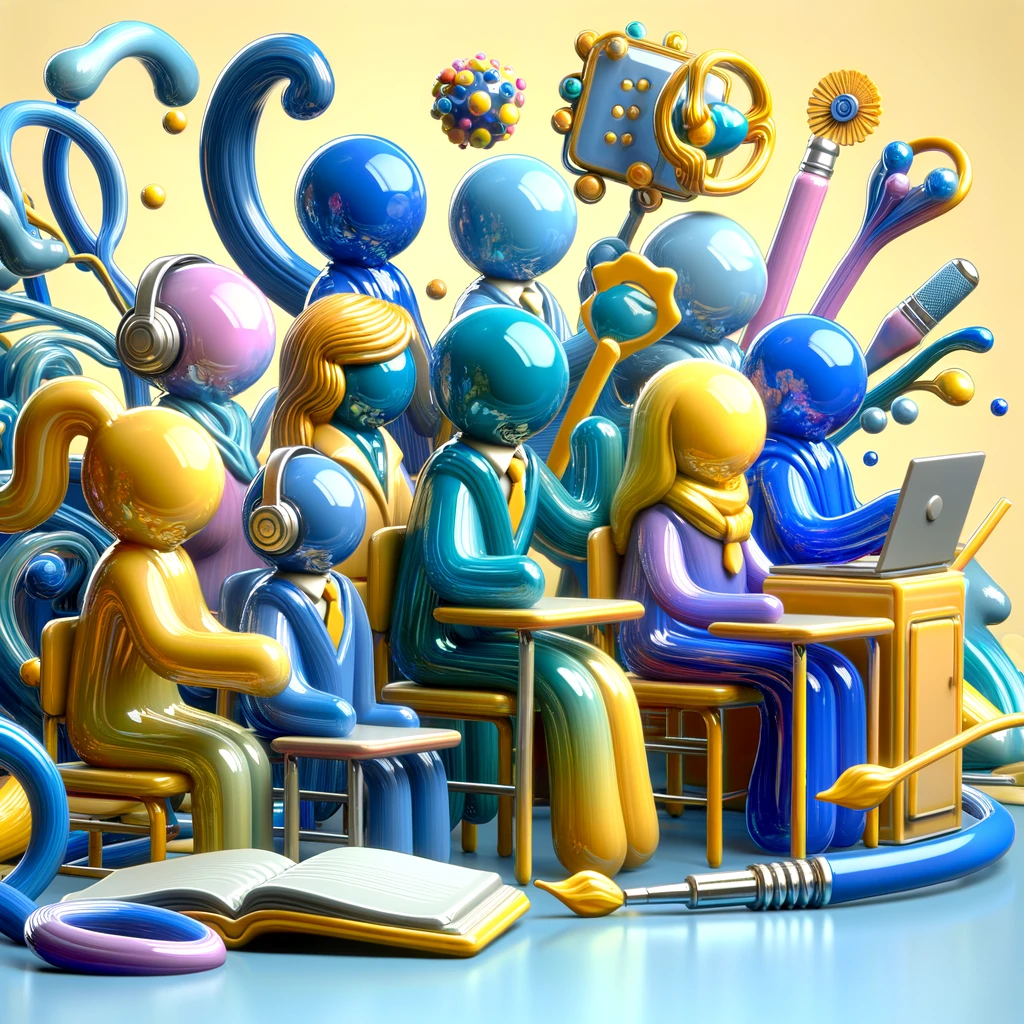In today’s globalized educational landscape, classrooms are microcosms of diverse linguistic cultures. How do we ensure that the learning is accessible to as many students as possible regardless of the potential barriers? As classrooms continue to become more diverse, the blend of languages, while enriching, can pose communication challenges. Fortunately, the integration of artificial intelligence (AI) and innovative technology has given rise to tools capable of bridging these linguistic gaps. These tools, encompassing software and futuristic hardware, ensure that every student, regardless of their language proficiency, has an equal opportunity to engage and learn effectively.
Here’s a compilation of some software tools and a peek into the future of language translation hardware that could redefine language accessibility in educational settings. I have explored and used some of these. Some of these are new to me, but shared with me by other educators. This is to guide as a springboard of learning, but also if you are using something helpful please share out as well so we can all benefit.
Software Tools:
- SayHi Translate:
- A mobile app offering instant speech translation, facilitating real-time linguistic accessibility.
- Cambly:
- Connects individuals with native speakers for personalized language learning, making it a valuable tool for both educators and learners.
- ZipCaptions:
- Offers live captions within your browser, translating text into multiple languages, ideal for students with hearing loss or those learning English.
- HeyGen and Video Translate:
- With HeyGen, AI-driven translation and voice cloning for video content is made accessible, enhancing multimedia learning resources.
- Rask AI:
- Simplifies the localization of YouTube videos with multiple audio tracks, enabling educators to cater to a global audience.
- YouTube Transcript:
- A tool to capture and translate YouTube video transcripts, further enriched when used alongside Google Translate or AI platforms like ChatGPT. And then convert the transcript to any language using most LLM’s like ChatGPT, Bard, Perplexitiy, Clause, or Poe to name a few.
- Google Meet and Zoom:
- Platforms with built-in or third-party captioning and translation services. For instance, Google Meet’s translated captions feature and Zoom’s translated captions settings are steps towards real-time understanding.
- Spf.io:
- Provides caption and translation services for Google Meet, enhancing the linguistic accessibility of live events and meetings.
- Interprefy:
- Integrated with Zoom, it offers real-time interpretation solutions, making multilingual Zoom meetings a reality.
Futuristic Hardware:
The distant future holds promise for even more seamless language translation and accessibility through evolving hardware technology. A glimpse into what’s on the horizon:
- AI-Powered Hearing Aids:
- The evolution of hearing aids is trending towards incorporating AI for real-time language translation. An example is the futuristic hearing aid technology discussed in this Scripps article, which envisions a world where hearing aids do more than amplify sound; they break down linguistic barriers. This is a leap towards not just hearing, but understanding, thus fostering a more inclusive learning environment.
These tools and prospective hardware advancements are carving a pathway towards more inclusive and accessible educational environments. By embracing these technological aids, educators and students alike can navigate the linguistic diversity with ease, ensuring that the quest for knowledge transcends language barriers.
The narrative of education is being rewritten with the infusion of AI and technology, leveling the playing field in a way that was unimaginable a few decades ago. These tools and emerging hardware signify a move towards a more inclusive and accessible educational paradigm where language barriers are surmounted and every learner has a seat at the table of knowledge. Through the lens of AI, the classroom transforms into a global learning community, embodying the essence of education as a universal right.
As we stand on the cusp of a revolution in educational accessibility, the exploration and discussion surrounding innovative tools and technologies are crucial. The collective endeavor to unearth and share new tools, hardware, and AI integrations is what will drive us further towards a world where language and hearing barriers cease to hinder the quest for knowledge.
I invite you, our readers, to be active participants in this ongoing dialogue. If you are aware of other tools, hardware, or AI integrations that are aiding in bridging accessibility gaps through overcoming hearing and language barriers, I would love to hear from you. Your insights could shine a light on resources that might prove to be game-changers in promoting accessibility and ensuring that education remains a space where everyone has a seat at the table.
Together, let’s continue to explore and share the boundless possibilities that AI and technology hold in making education an inclusive and accessible treasure for all.

Leave a Reply